Many owners of country houses seek to conduct central natural gas to their site. However, not everyone realizes how expensive it can be. I offer you the estimated cost of connecting gas to a house in Moscow and the Moscow region. Prices are based on your experience and feedback from friends who connected gas to their plots last year. So, the stages of gasification.
1. Preliminary coordination of gas connection with the relevant authorities, approval of all necessary documentation can cost up to 200,000 rubles. This service involves the execution of documents required to apply for the connection of an object to gas, as well as to obtain a technical specification (technical specifications).
The term for consideration of an application for technical specifications for gasification of a house is three weeks, and the minimum term for connecting gas is 1.5 years. Additional costs will be required to speed up the gasification process. In the event that it becomes necessary to connect the sector to a private gas pipeline, you will need to have a notarized or legally certified permission from the homeowner with you.
2. The estimated cost of the project for connecting gas to the house is 15,000 - 20,000 rubles. The preparation of such a project is carried out by a specialized organization with a license and employees who have passed certification. This project must first be agreed with the operating organization - the gas trust. The project itself is registered there.
3. It costs about 50,000 rubles to conduct wiring from the highway to the object, and for each meter laid gas pipe you will have to pay about 3000 rubles. If the gas pipe stretches over a distance of 100 meters, the price of a linear meter will vary from 800 to 3000 rubles. Purchasing pipes for yourself is not recommended because many companies may refuse to work with such pipes.
As for the trench, then, in order to save money, you can dig it yourself. The depth of the pit should be approximately 1.5 meters. The full cost of work, except for pipes, includes: execution of executive and technical documentation, installation of an underground gas pipeline, components.

4. Only a gas trust can tie into a gas main; for this, an appropriate agreement is signed with it. The price of such works is 30,000 rubles (this is not the final amount).
5. At the stage of acceptance by the gas inspection of the facility, the owner will have to pay an amount equal to 50,000 rubles. The state commission includes representatives of the same gas trust, with which most of the documents for the implementation of connecting gas to the house are agreed. By the time of connection in the house, an internal gas supply system must be prepared, the organization of which implies the presence of a gas boiler room, separate from other premises.
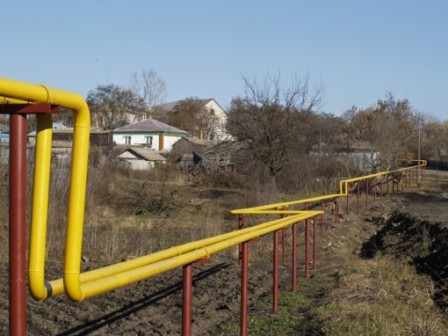
At the final stage, a supply contract is drawn up natural gas, about regular maintenance of the gas pipeline and gas equipment in the house, and a certificate of serviceability of the gas device from the fire department is also drawn up. The customer must provide a contract for the maintenance of the boiler and an act of checking the chimney and ventilation duct.
All of the above services are required. The total price will be about 500,000 rubles. To reduce the cost of connecting a private house to gas, you can cooperate with close neighbors and draw up some documents at the same time for several private households.
Hold in private house gas is sometimes difficult and quite expensive. In this article, we will try to tell in detail about the intricacies of connecting gas in a private house and the technique of laying a gas pipeline. In addition, a fairly large amount of material is devoted to the main stage of gasification - this is the collection and execution of documentation. It is best to use this article as a guide or reminder in this process. Well, now let's go directly to the article.
When you need to cut into a gas pipeline, you should first find out who owns it. Most often they are "GorGaz". Permission must be obtained from the owner in order to tie into the gas pipeline. When the owner of the gas pipeline has approved your application, the next step is to contact the design organization, which will have to develop a gasification project for your house and the possibility of connecting it to the gas pipeline.
How to conduct gas to a private house?
There are only six steps for gasifying a house:First step. Definition of technical conditions.
If you want to be able to conduct gas in an individual house, the consumer must have on hand specifications(TU) for the possibility of gasification of a residential building, which is issued by the city gas distribution organization. To get the data. conditions, you need the following documents:
- Write an application for the issuance of technical conditions, which will indicate: the address, the volume of gas consumption, and the type and quantity of gas-consuming equipment.
- You need a passport of the one who makes the order.
- Required documents for the land, which confirm your right to it.
- The same documents for your residential building: if it already exists, then this is a registration of ownership; and if the house is only under construction or project, you need to have a written order from the authorities, as well as a letter of permission from the Committee on Urban Planning and Architecture (CGA).
- a power of attorney, which is notarized, to represent interests in order to obtain technical conditions.
- There should be a situational plan of a residential building or your site.
- if the customer wishes to build a gas pipeline at his own expense, then a “Refusal letter” should also be made from the queue for budget gasification.
Second step. Creation of a project for a gas supply system.
All necessary design work in private residential buildings can be carried out by those organizations that have licenses for this type of activity in their hands, this includes the design and construction departments of the GRO.
To prepare a complete project, it is necessary that the customer prepares the following documents: explication and topographic survey of wells for the M1:500 project, but no later than 2 years; you will need documentation on the building and the site (all available architectural drawings for building a house and a site plan), which is also agreed with the architect in the area; type of equipment: stove or boiler; See also Act of inspection of the condition of ventilation ducts with chimneys.

The third step is agreement.
The prepared gas supply project, depending on the subtleties and nuances of the project, must be agreed with the technical department and other interested organizations. This will be the Committee on Urban Planning and Architecture; Committee, which deals with issues of improvement and road facilities; Department of Gardening and Parking; as well as Rostekhnadzor.
Step number four. Construction of a gas pipeline.
It is important to note that only those organizations that have specific licenses for this type of activity can implement a gas supply project for your home (construction and installation work). Completion of the construction should be formalized by the Acceptance Certificate of the completed construction of the gas distribution system facility through the internal and external gas pipelines. Thus, the State Commission should include representatives of: a design organization, an operating organization, a customer, a construction organization, Rostekhnadzor (a representative from the gas supervision department) and the gas safety department.
Step number five. Drawing up a contract for the maintenance of the technical condition of the gas pipeline.
It is important to know that it is necessary to sign a service agreement with PES GRO. Within one week, the price for Maintenance internal pipeline. After that, you should sign the Maintenance Agreement, and you can safely proceed to the next step. To conclude this agreement on those. maintenance of a gas pipeline with GDS You should have the following documents with you: a complete set of executive and technical documents for gas supply; a copy of the passport of the owner of the house (pages 2,3 and 5); one copy of the certificate of ownership of the house (this can be a technical passport for the house, a document for inheritance or purchase, but if there are no documents for the house, it is important to provide a copy of the certificate for this land plot). There must be a copy of the contract for maintenance and commissioning; a copy of the power of attorney, which is notarized (if the contract is executed through a power of attorney); another copy of the contract for the maintenance of automation (if the house has a gas control system); the originals of all passports for the gas equipment available in the house are also submitted.
Sixth step. We conclude a contract for the consumption of gas.
A very important condition is to sign an agreement so that gas is supplied to your home. You can conclude such an agreement absolutely free of charge, the consumer will only need to pay for the volume of gas received.

List of documents required to sign a gas supply agreement. You should definitely have them with you.
- your passport (or a signed power of attorney from the owner of the house);
- a photocopy of the document from the State Bureau of Investigation about your ownership of the house;
- Certificate of completed construction on the internal gas pipeline;
- passport for the boiler, stove and gas meter.
Seventh step. Primary start of gas in the house.
You are obliged to sign an agreement with the GDO, which includes the issue of the initial start-up of gas and tie-in to the existing gas pipeline. After the permission is received from the GDO, the customer must make a gas start-up agreement, which specifies the work on connecting to the gas pipeline and launching the long-awaited gas (valve operation and setting the SHGRP). For this purpose, the customer must come to the PES, receive a receipt for payment from the estimator, and after the payment is made, the start date will be set. At the same time, there must be specialists at the facility who deal with the issue of setting up and starting up boiler equipment. When the house has a gas stove and according to the project - in principle, it is enough to turn on the gas; commissioning work on the boiler is most often carried out on the day of gas start-up.
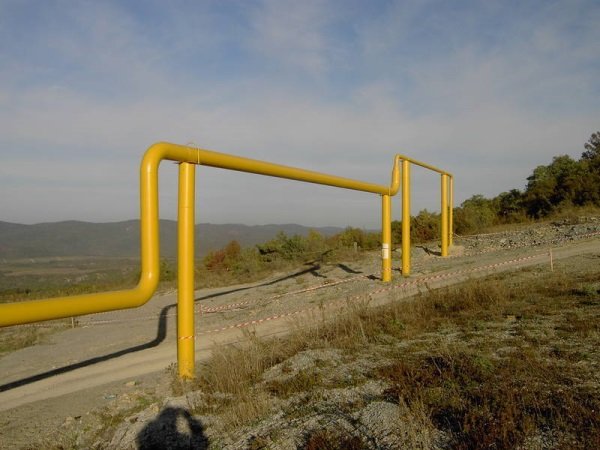
How much does it cost to conduct gas, and how long will this process take?
To answer this question, it is worth considering some aspects. Among which is the remoteness of your house from the general gas. Here the diameter of the pipe section also matters. It should also be assessed whether the owners of neighboring sites will give the opportunity to conduct gas through their territory. It will be important to have their written consent that you are pursuing gas. Is there enough pressure in the line? How large the area of \u200b\u200byour house - the amount of gas consumed will depend on this.Very often, land owners who want to bring gas to their house, which is located in SNT, have problems. Often the boards of SNT delay this process, because they have an interest in making it possible to conduct gas only centrally. In such cases, the cost of gas connection is much higher for a SNT member.
If gas is carried out to a site that is intended for individual construction (IZHS), then in this case the situation may be hampered by work on coordinating the installation of a gas main with self-government bodies. They may own, for example, the roads through which your pipe will pass.
Most specialists have the following practice: almost always there are not enough documents from the owners. Thus, assistance is constantly required in obtaining these same documents, after which gas wiring is the last task. The price is different every time, but on average it amounts to 200,000 rubles for the preparation of documents and another 100,000 rubles for all the necessary work.
In addition, you can distinguish between the period of gas supply to the house. When you want to carry out gas quickly, you should establish close cooperation with the existing gas services. When you don’t have special acquaintances, this process can take several years. Costs better job trust in the hands of professionals.

It is important to remember that a tie-in to the highway carried out with violations will be criminally punishable actions.
How can you bring gas to the country house?
If you want to make your dacha more comfortable, not to think about firewood and use it only for blue fuel, you will need to tinker a little with important documents and save up a good amount of money. It is worth remembering that connecting a gas pipe and purchasing equipment is a costly business. In addition, according to the law, all the expenses for laying inside the garden partnership will be borne by the summer residents themselves.The first thing that is required is obtaining a permit for gasification. It is necessary to go to the local gas services with this question - these are Gorgaz, Raigas or others. There you will receive all the information on the conditions of gasification and a list of documents that need to be prepared for carrying blue fuel to the dacha. In the same place you will receive a form with technical specifications. Please note that it must be issued free of charge. According to the law, both verification and processing of all documents that you bring should be free.
You should contact the design organization to draw up a project. You should not try to catch what is cheaper - you'd better pay more, because design errors can cost you your whole life - gas is an explosive and flammable substance. Good specialists will fully study all the subtleties of your site or cottage and, based on them, will draw up a project.
When this stage is passed, you should give the project to the workers in the gas service. Based on it, design estimates will be prepared. This service will be paid and, and it should be considered at the rates of Glavgosexpertiza. In addition, you have the opportunity to contact a private company, where the price will be calculated according to personal criteria.
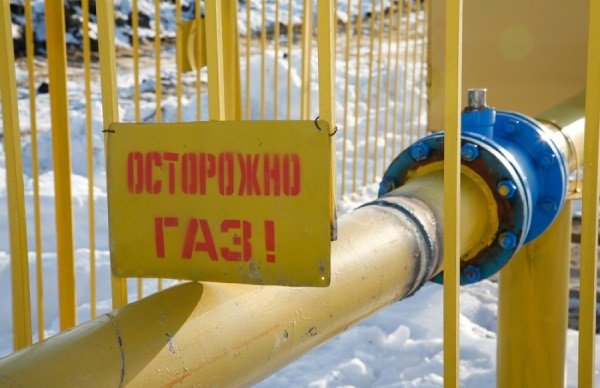
Next, you need to choose an organization that will supply gas to your dacha. When choosing a contractor, do not forget to look at his license for the possibility of gasification. It is also worth paying attention to whether employees have experience in this area. It is important to remember that the work does not end only with the laying of the pipe. They also have to mount all the equipment in your country house.
It is mandatory to conclude an agreement with the contractor and draw up an estimate. It must also include the price of supplying gas to the house - approximately 5-7 thousand rubles per meter. When the partnership does not have a gas network, it will be necessary to pay for its construction.
How to bring gas to the village?
In urban apartments, natural gas will bring heat to the house, but in the countryside, most are heated, as before, either with wood or coal. But, today, the issue of gasification of the village is quite acute, and when the settlement has no plans to gasify the area, then its residents themselves should think about the possibility of gas supply.You must first create a group and legally register as a consumer society.
A charter should be created, a meeting should be held at which you will choose a person who, on behalf of your society, will receive all permits for the gasification of the village.
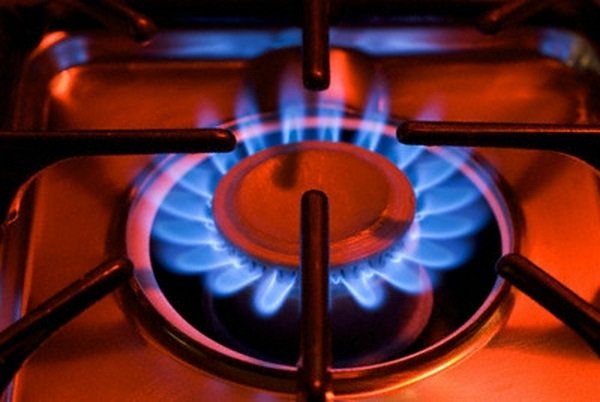
After that, your representative is obliged to submit an application to the regional organization that distributes gas, on behalf of all members of the society, for the possibility of obtaining those. gas connection conditions. The following documents must be added to the application:
- documents that confirm the authority of the person who signed the letter of request (application in writing);
- a copy from the master plan of the area, which indicates the location of your village;
- documents that will serve as confirmation of the ownership of existing gasification facilities or documents for land plots that need to be gasified.
After you find a contractor and build a gas pipeline, it will be important to sign a gas supply agreement.
Heating a private house is one of the primary tasks that the owners of new households, summer residents and residents of the private sector are forced to solve. In most cases, given the presence of a developed gas distribution infrastructure, gas heating systems are considered the most popular among the population today. Having opted for this type of heating, it remains only to conduct gas into the house, to carry out the installation of the necessary equipment.
The question is how the procedure for connecting gas to a private house looks today and how complicated this process is. In any case, once you have made a choice, there is no going back. In addition, gas is still the most accessible and cheapest type of household fuel for our country. You can supply gas even if there is no main gas pipeline in the neighborhood.
The answer to this question is simple and clear, without even going into deep mathematical calculations and discussions about the ecology of this energy supply option.
Firstly:
- Gas, unlike other types of fuel, does not need to be stored (ignoring gas holders and);
Secondly:
- Connecting a private house does not require complex installation work on your site;
Thirdly:
- Modern gas boilers equipped with all the necessary control and safety sensors. Having gas supplied to the site, it is possible to heat not only the house, but also other household and outbuildings. The presence of gas makes the house and land immediately a liquid commodity.
The gas supply automatically solves a lot of problems. You are guaranteed to receive an almost uninterrupted power supply that does not require additional investments during subsequent operation. At your disposal now there is always fuel for the gas stove, and there is always hot water in the house. After evaluating all the pros and cons, it is worth studying the question of how much it will cost to connect gas and how to properly connect gas to a private house.
What connection options should be considered?
To date, the most common way to organize gas supply in a private household is to connect to a gas pipeline. For many settlements, especially near large regional and district centers, the main gas pipeline is a common thing. However, in some cases, such a connection is not possible due to the lack of a centralized gas supply. Gasification of certain regions of the country continues, but there are regions where local residents will have to wait years for such a privilege.
If you find yourself in a similar situation, you can use liquefied gas, which is regularly delivered for the domestic needs of the population. Many summer residents and owners of country houses and estates use this type of fuel. Another question is that it is problematic to provide a house with a large area, over 150 m 2, with gas cylinders. For domestic needs, heating requires a large amount of gas - according to preliminary calculations, at least 6000 m 3 during the heating season.
If you want to have a constant and uninterrupted supply of gas for domestic needs, including heating a private house, you cannot do without installing a gas tank. From a technical point of view, the gas tank perfectly solves the problem. If there is no question of funds, this installation can successfully cope with the tasks assigned to it.
Despite the fact that the last two options are considered in the context of the lack of centralized gas supply, they are considered quite practical and effective. The main part of consumers today use the most massive connection option - main gas pipelines.
Important! You should know that gas is supplied exclusively to the finished capital structure. It is impossible to obtain a permit for gas supply just to a land plot without a residential building. The building does not have to be residential and habitable. Gas can be connected to country house or make an eyeliner to any other outbuilding.
Gas connection - necessary documentation and procedural issues
Conducting gas to the site where your residential building is located or there are other capital buildings involves compliance with the necessary procedural formalities. The main task that is set for the owners of the house is to coordinate the project documentation and obtain permission to connect to the gas main.
To do this, you need to collect and prepare the following documents:
- technical passport for a residential building (building);
- Certificate of ownership of a residential building, capital structure;
- Evidence of ownership of the land or title agreement for the land;
- cadastral plan of the site with adjacent territories;
- passport of the owner of the house;
- tax identification code (TIN).
Having collected Required documents you can proceed to the next steps. Gas connection requires technical specifications (TU). From a technical point of view, TU is a document that indicates the permissible place of connection to the main gas pipeline, its pressure and diameter, as well as the basic requirements of the operating organization. For example, this is how the official TU form issued by Mosoblgaz looks like. In other regions, such documents may have a different look, slightly different form and design.

Obtaining technical specifications from the gas distribution organization is already the first important step towards the gasification of your residential building.
Technical conditions are the basis for the development of project documentation, which is subsequently subject to agreement with the gas supply service provider.
Should know! It is better to entrust the preparation of the necessary documentation for connection to specialized specialized organizations that, by the nature of their activities, are engaged in the preparation of such documentation and the development of projects. It is the experts who can suggest how to conduct gas to a private house, evaluating each situation specifically, based on the existing conditions.
Unauthorized, unauthorized connection to main gas pipelines prosecuted by law.
Nuances and technical aspects of connection in the light of legislative innovations
In 2013, the Government of the Russian Federation introduced new rules for connecting gas to the population, norms for the supply of gas for household needs. This resolution also spells out the procedure for connecting natural gas for the needs of private households in the new conditions.
Today, for those citizens who have expressed a desire to conduct gas to their household using the main gas supply, the conditions have been greatly simplified, but at the same time, they have become tougher in the connection procedure itself. V currently the cost of connection for small households is only 20-50 thousand rubles, in contrast to the astronomical sums previously spent on similar events with connection. Provided that you have enough for your own needs, including the operation of the heating system, no more than 5 m 3 per day. According to experts and the owners of residential buildings themselves, this volume is quite enough to heat 200m 2 of living space.
The specified amount is calculated from the technical conditions, when the distance from your site to the main gas pipe does not exceed 200 meters. A new procedure has been established, which determines the connection of gas to a private house in accordance with the new rules. All work is carried out in strict accordance with the established procedure, there is no other interpretation of the connection procedure.
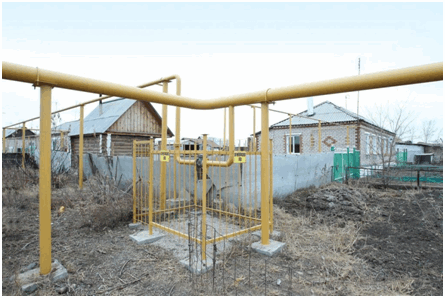
Formally, the new connection procedure is simple. If your documents: an application to the gas distribution company, a certificate of ownership of the house and the declared capacity of the gas boiler comply with the regulations, there are technical possibilities to connect to the gas main, it remains to conclude an agreement with the gas industry. Then everything proceeds in the same way as before. TU, then the project, and after all the approvals, the direct installation of the gas pipe begins, connecting it to the gas distribution branch.
Actual! In cases where the laying of a gas pipe is associated with the operation of a gas pipeline that is under common ownership with neighbors, their written consent to the connection will be required. If the gas pipeline needs to be laid through the territory of third-party sites (communal property, house committee or private households), you will need to obtain their approval.
According to the new rules, the time for carrying out all work related to connecting a private residential building to a gas main is no more than 3 months from the date of application. In the event that your locality is on the list of localities subject to gasification on the basis of the state program, the costs are borne by the gas distribution company. The pipe will be brought only to the border of your site. The rest falls on the shoulders of the owner.
In each individual case, there are current issues related to the implementation of the project, which have to be resolved on the spot. The cost of connection works varies depending on the tariffs established in this region. The cost is influenced by the type of area where the work is being carried out, the topography of the site and the methods of laying the pipe. Separately, the work on tie-in pipes and supplying gas to the house is evaluated. Additional costs will arise already at the stage of connecting the gas pipe to the heating equipment and to individual elements of the entire gas supply system. Significant initial costs are further paid off due to the high efficiency of the autonomous heating system and the satisfaction of needs at the household level.
Russia is the second country in the world in the extraction of natural. And the first in terms of the reserves of this mineral. However, despite the fact that the share of our country in the world gas industry, according to OPEC, is 18%, there is a main gas pipeline in far from all corners of our vast country.
The large-scale gasification project for all Russian settlements, developed by the government jointly with OAO Gazprom in 2001, seems to have ceased to be a priority both for the monopolist in this industry and for the government itself. Today, Gazprom's expenses for the implementation of this project are comparable to investments in football clubs like the St. Petersburg "Zenith" or the German "Schalke 04" - that is, some 3% of all the company's investments. And the statements of the heads of state that “the goal is very simple - in all our villages that are developing, and in all our cities there should be gas. Somewhere this is the period until the 15th year, ”also begin to gradually disappear behind the next turn of Leta.
But God bless her, with politics, this article is for those happy Russians who are part of 65% of the population of cities and villages in Russia, already covered by yellow pipes. About, how to conduct gas to the house: where to start.
“And we have gas in our apartment ...”
If the gasification of your locality is already a completely accomplished fact, and you have not yet become a user of this blessing of civilization, then first of all you need to know the following: use must have a legal basis; independent tapping into a gas main is a criminal offense and is punishable in accordance with applicable law.Therefore, all work related to the design, laying the pipe to the site, work on connecting equipment and putting the system into operation must be carried out by specialized licensed (membership in SRO) organizations. 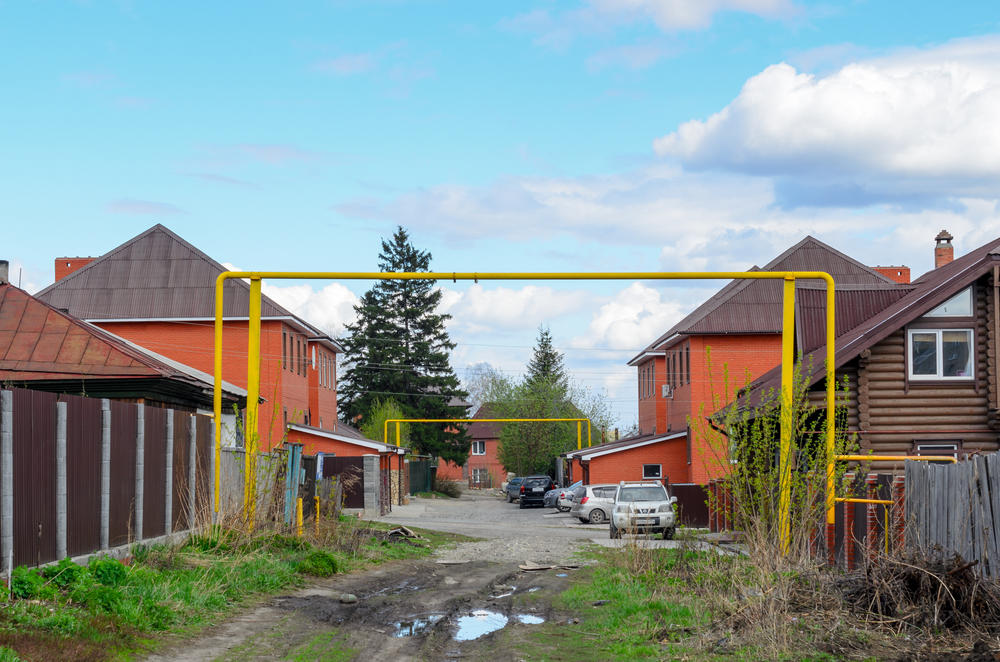
The rules for connecting capital construction facilities to gas distribution networks were approved by Government Decree No. 1314 dated December 30, 2013 and entered into force on March 1, 2014. For many, the procedure for connecting a private house to a gas main seems to be a dark and confusing affair. I will try to clarify the essence of this process by dividing it into successive stages.
Stage one - we get TU
The first step towards the gasification of your own home will be getting specifications(THAT). To do this, you need to contact your local gas distribution organization with the following documents:- Application of the customer, that is, you, for the issuance of technical conditions. The application is required to indicate the address of the gasification facility, the purpose (for which you need gas), the estimated gas consumption, as well as the amount and type.
- Ownership documents land plot and . If still in the process of construction, then a building permit signed by the Committee for Urban Planning and Architecture is required.
- Passport of the customer.
- Situational plan for the placement of gasified buildings on the site - existing or being designed.
- Power of attorney to represent the interests of the customer upon receipt of technical specifications (notarized - if you plan to act through a representative).

This applies to the option if you apply for gasification at the expense of the state budget as part of the gasification program for cities and rural settlements in Russia. Naturally, there are limitations in this program: the use of public funds is provided for connecting the gas pipeline to the boundaries of the settlement and building a gas distribution station, at which, among other things, pressure reduction occurs.
You fall under the program if the estimated flow rate does not exceed 5 cubic meters per hour, yours is located no further than 200 meters from the gas distribution station, and the working gas pressure is not more than 0.3 MPa. And all connection activities consist only in the installation of gas pipelines - inputs. In this case, connection to the gas main (technological connection) will cost you, according to the established tariffs, 25,000 rubles if you are a resident of a rural settlement, and 50,000 rubles for residents of urban districts and urban settlements.
But you can resort to your own means to solve this problem. Then, in addition to the above documents, you will also need to write a letter of refusal, in which you indicate that you are waiving the queue for gasification at the expense of the budget and plan to bring the gas pipeline to the house at your own expense.
Stage two - we order the project
A gas distribution company is required by law to issue a technical specification or a reasoned refusal within two weeks. If your application is approved and provided with TS, it's time to move on to design.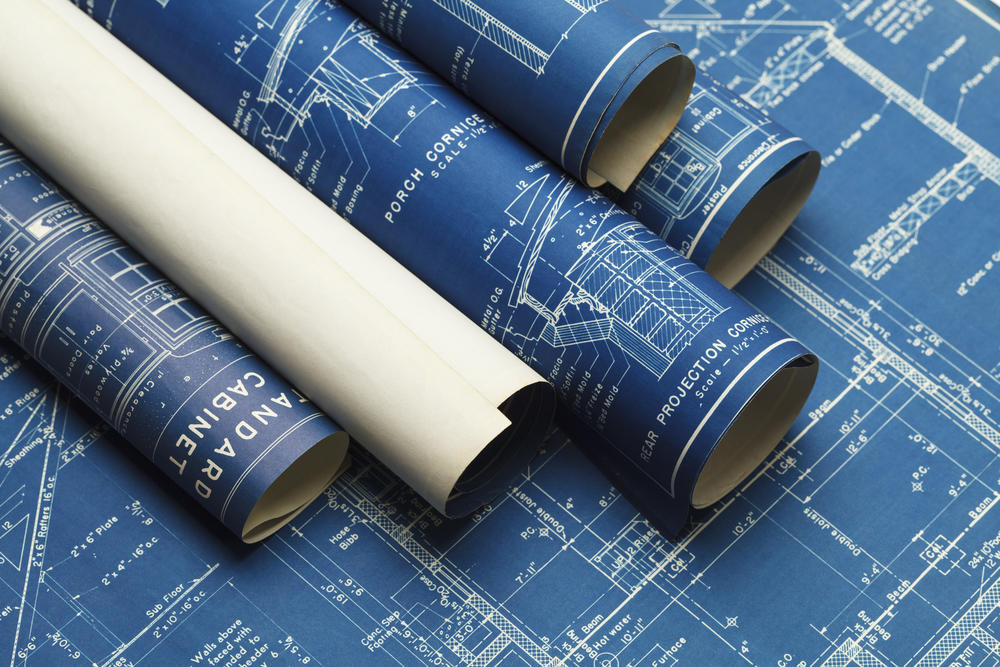
The gasification project of a private house consists of two parts:
- a project for laying a pipeline from the gas distribution station to the site;
- a project for distributing a gas pipe across the site, bringing it to the house and connecting gas-consuming equipment.
For design, you should prepare the following documents:
- The topographic survey of the site is valid, that is, not older than two years.
- Site plan, drawings of a house under construction, endorsed by a district architect, or a passport for an existing building.
- List with technical characteristics.
- Certificates of inspection and channels.
Stage three - we agree on the project
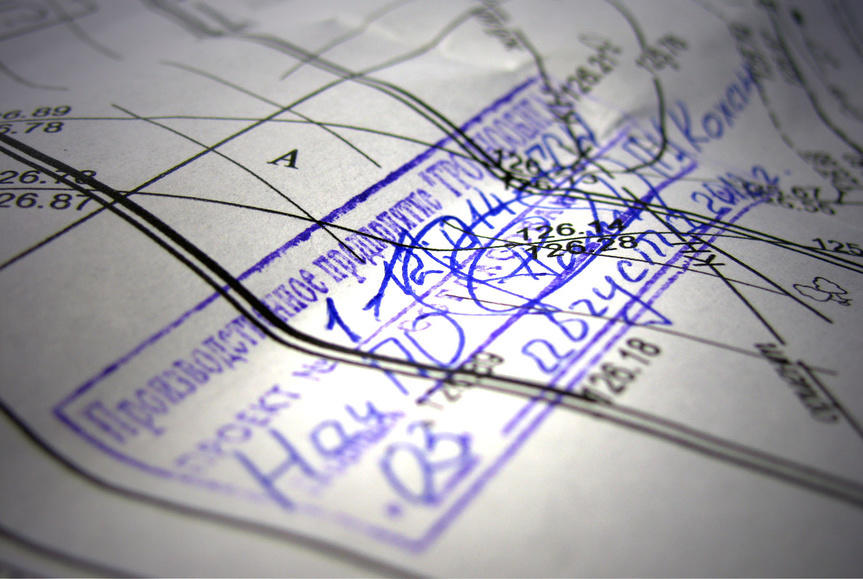
After the project is developed, it is required to coordinate it in the production and technical department of the GDO (gas distribution organization), as well as, if necessary (depending on the project), in other interested organizations: for example, in the committee for improvement and road facilities , in the Committee for Urban Planning and Architecture, and others.
Stage four - we are building a gas pipeline
After passing all the approvals, contact a licensed organization engaged in construction and installation work on the installation of gas pipelines.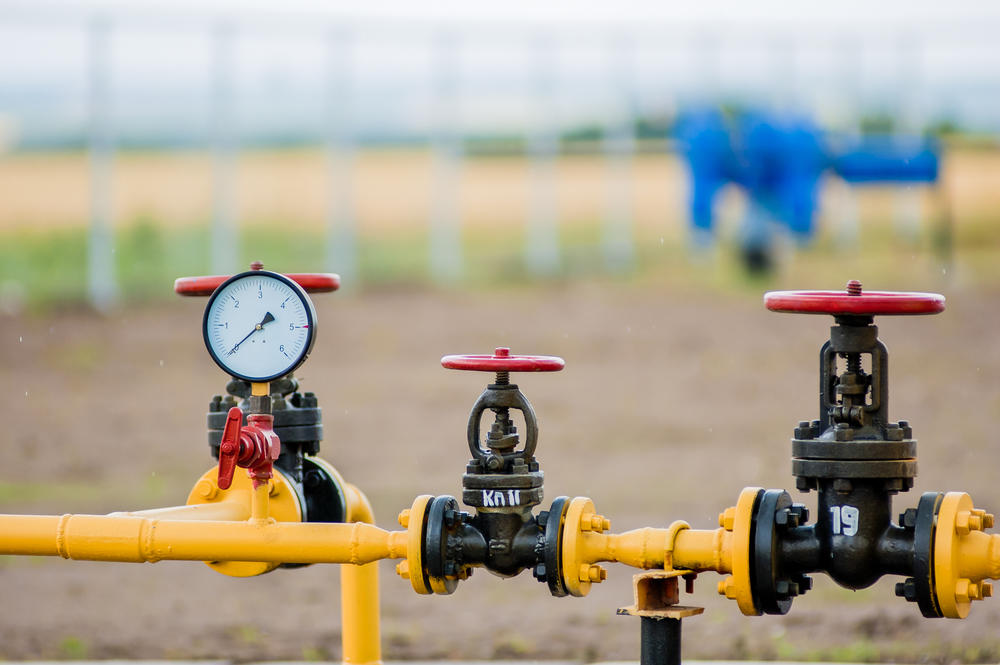
The completion of the construction of the gas pipeline is documented by the act of acceptance of the gas distribution system, external and internal pipelines. Required to attend state commission, which includes representatives of design, construction and operational organizations, as well as representatives of departments for gas supervision and gas safety, and, of course, the customer or his authorized representative.
Stage five - we conclude contracts for maintenance and gas supply
After the completion of the construction of external and internal gas pipelines, it is required to conclude maintenance contract(TO) gas pipeline.When applying, you will need the following package of documents:
- Executive technical documentation.
- Certificate of ownership - copy.
- Copies of contracts for service maintenance and automation, if this equipment is available.
- A copy of the owner's passport.
- Passports of gas-consuming equipment (, gas stove), metering device (gas meter).

After submitting the documents within seven days, the cost of maintenance will be calculated and a contract for maintenance will be concluded. After the preparation of this document, you have to conclude another contract - to supply
In this article, you will find out how much it costs to bring gas to a private house, the price of a gas project and what determines the cost of connection in different regions, as well as filing an application and other tips.
Much depends on the area:
The cost of conducting gas to the house differs significantly from area to area. For example, let's compare two metropolitan areas:
In the Moscow region, the cost of gasification ranges from 400-700 thousand rubles, which makes this region the leader in terms of connection costs. True, the farther the house is from Moscow, the more money the owner of the house will be able to save. If the distance from the center is large enough, then you can reduce costs to a relatively modest 200 thousand rubles. At the same time, bribes will still be at least 80 thousand rubles.
V Leningrad region the same problem can be solved for 300 thousand rubles, of which about 80 thousand will fall on the tie-in to the highway.
Read also:
Factors affecting the cost of gasification
Gasification tariffs consist of the following:
- Collection and execution of all necessary documentation with the subsequent filing of an application for connection. It should not be forgotten that gas can be connected no earlier than one and a half years after the application is submitted. To speed up the process, you will have to pay an additional amount, which varies, depending on the region, from thousands to tens of thousands of rubles.
- Preparation of a gasification project can cost at least 2,000 rubles, and a maximum of ten times more expensive.
- Gas pipeline connection to the facility and wiring throughout the building itself. The cost of work depends on the length of the pipeline. One meter of the gas pipeline will cost at least 1,000 rubles.
- Connection to the highway is carried out by a gas trust, the contract should be concluded with him. In addition to the contract, some more permissions and approvals will be required, which will be discussed in the trust. Statistics show that connecting to the highway will not be cheaper than 10 thousand rubles.
- The inspection check of the object is more difficult than the other stages to rate the costs. Each region sets its own cost for verification. One way or another, part of the amount will not reach the budget. In this area, corruption is holding strong, "kickbacks" can amount to tens of thousands of rubles.
- Central gasification can be of two types: underground and ground. The advantage of the underground arrangement of the gas pipeline is the longer service life of the pipes and their more reliable protection against damage. At the same time, the underground laying of a gas pipeline is 25-30% more expensive than the above-ground one, and in its repair, in some cases, it is necessary to obtain special permits for earthmoving.
Gas project in a private house price
You can find out how much a gasification project for a private house costs in any private company working in this area. Here is the approximate cost of a gasification project for a private house in the central region from private companies. Prices can be somewhat different, depending on the level of services provided, but we will talk about this later.
Turnkey connection prices:
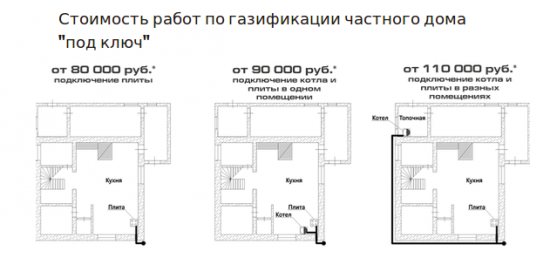
Filing an application
So, you have already found out who owns the gas pipeline. Next, you should apply for gasification to the local authorities. Don't forget to bring the following documents with you:
- passport (if your representative will deal with this issue, then you need to draw up a power of attorney for your representative);
- documents confirming your ownership of the site;
- situational plan with reference to the territory of your settlement.
Further, the local authorities will need time (no more than one month) to check the application for authenticity, as well as determine the technical feasibility and source of gas connection to your home. If there is such an opportunity, then within a month you will receive a draft contract for gas supply and technical specifications (TU) for its implementation.
The main factor that makes connecting gas to a private house profitable is the low cost of this type of fuel. The cost of connecting gas and the costs of a project for connecting gas to a private house pay off in 5-8 years.
Work in your area
As we have already said, one of the documents that will be issued to you will be TU. Here you will read what work is to be done on your site. Do not think that you will be able to fulfill all the requirements of the technical specifications on your own, because gas communications require the necessary qualification permits due to the fact that they are an object of increased danger.
For such work, you will be helped by a construction organization that has a permit for working with gas. What is meant by the word "work" in this case:
- development of a gas project;
- pipe installation to your house;
- piping in your home;
- connection to the pipes of the gas meter, as well as all gas appliances in the house.
When the contract and specifications are signed by both parties, you begin to perform your part of the work. It is difficult to clearly define both the timing and the cost of work here, since they depend on the distance over which the pipe will be laid, the amount of gas consumed, the quantity, type of gas appliances in the house, etc. Before starting work, you need to wait until local authorities will not prepare an external gas pipeline project. Within five days, they are required to notify you of the place of connection of the pipe at the border of the site.
After you have carried out all the necessary amount of work on your site, you need to apply for verification of the implementation of the technical specifications. The authorities come and check. If the work meets the standards, an act is drawn up.
We are sure that you have already raised the question of how much does the gasification of a private house cost in the end? In the Nizhny Novgorod region, different figures are given, because everything depends on many factors. But the amount will be at least two hundred thousand for a house with an area of 90 to 150 square meters. And also consider the cost of buying a meter, gas stove, boiler, etc.
Bringing the pipe to the boundary of the site
In parallel with you, the authorities are doing their part of the work, namely, they are laying a gas pipeline from the pipe running along your street to the border of the site, for example, to the fence. The timing and cost of such work will depend on which category your facility belongs to, because according to the law on connecting to gas communications, those who wish to conduct gas are divided into categories.
The most “preferential” category is people who consume no more than 5 cubic meters of gas per hour. In this case, the gas pressure should be no more than 0.3 MPa, and the distance from the site boundary to the already laid gas pipeline should not exceed 200 meters. Construction involves only the construction of a gas pipeline - input.
It is desirable that you be assigned to this group, since the connection conditions here are relatively formalized. In particular, it has been established that the work on laying the gas pipeline branch to the boundaries of the site was estimated at a sum slightly exceeding fifty thousand rubles. This amount may increase due to inflation. As regards timing, if active pipe is located no further than 40 meters from your site, then the construction must be completed within a year; if the distance is more than 40 meters, then one and a half years are allotted for construction.
Let's figure out what gas consumption of 5 cubic meters per hour means. An hourly consumption of five cubic meters of gas has:
- a boiler with a power of up to 33 kW plus a conventional gas stove with a power of 10 kW, which has an oven and 4 burners;
- boiler with power up to 43 kW;
- boiler plus stove plus other equipment, so that all together is no more than 43 kW;
- gasification of residential premises, the area of \u200b\u200bwhich does not exceed 150 sq. m.
In addition to the category described above, there are 2 more categories that are distinguished by increased gas consumption and a large distance from the site to the gas pipeline. For example, for the second category, the volume of gas is determined at 500 cubic meters per hour. Of course, both the cost and the terms are often longer and longer. The time frame is one and a half to two years, and the costs will be calculated based on standardized tariff rates.
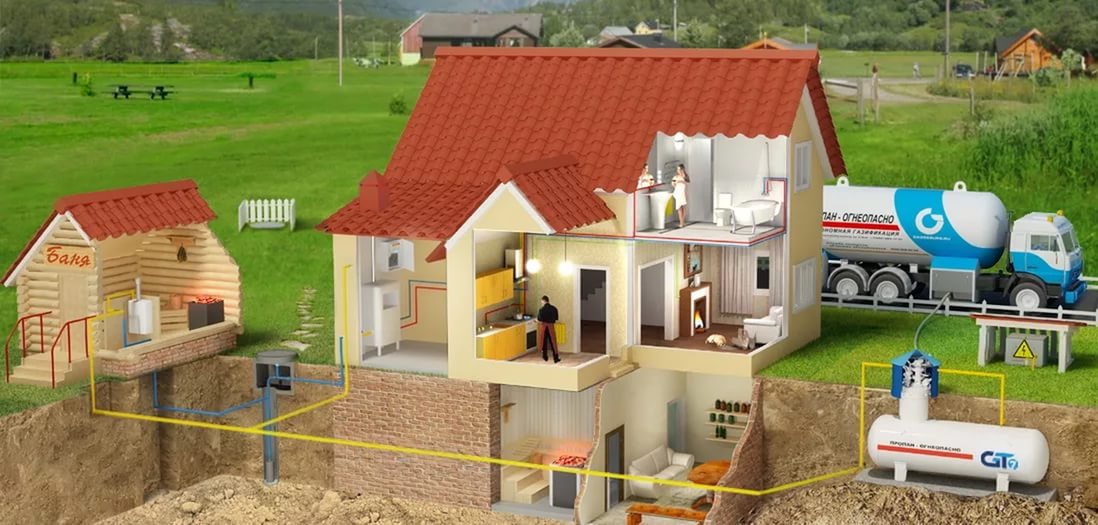
We hope that you have entered the first category, in which case we will sum up the following:
- gasification costs will be divided into two parts: costs for work on your site (project, construction and installation works, equipment-materials) and beyond;
- you will not be able to predict in advance how much it costs to fulfill the first part of the expenses, but it will amount to at least several hundred thousand rubles;
- as for the second part, here the amount is clearer if you are in the preferential group of those who wish to connect to gas (recall, gas consumption is less than 5 cubic meters per hour, and the distance to the already laid pipe is less than 200 meters, while the pressure is pipe does not exceed 0.3 MPa, and it is also necessary to carry out only a gas pipeline-inlet);
- it will take up to one and a half years to conduct gas to your private house.
When all gasification work has been carried out both on your part and on the part of the local authorities, you will only have to sign the relevant acts. You also need to sign a contract for the supply of gas and agree on exactly when the gas will be launched through your pipe. And then you plant the result of painstaking and long work.
Unfortunately, in reality, the process of gasifying your home may not be as simple as described in this article. In each individual case, certain problems and circumstances may arise for which you were not prepared. Tune in to the fact that conducting gas to your private home is not an easy and fast business. Before making a decision on gasification, weigh the pros and cons, specify the timing of the work and how much it costs.

Only when you are sure that you clearly understand the algorithm of actions for conducting gas, and are confident in your financial situation, proceed to the process of gasification. We hope that our article will help you understand the logic of actions, what documents are needed, where to go, and who is responsible for carrying out certain work in your area.
And most importantly - if you have already made a final decision and are determined to bring gas to your private home, do not put it off. Quickly collect the necessary information, the necessary documents and go to apply. The sooner you start the whole mechanism, the sooner gas will appear in your house. And it is likely that you will be able to save money, because in the conditions of a difficult economic situation in the country, the sooner you install gas, the cheaper it will cost you.
We thank the sites for the information provided: stroiki-doma.net, nn-life.ru, promvest.info





